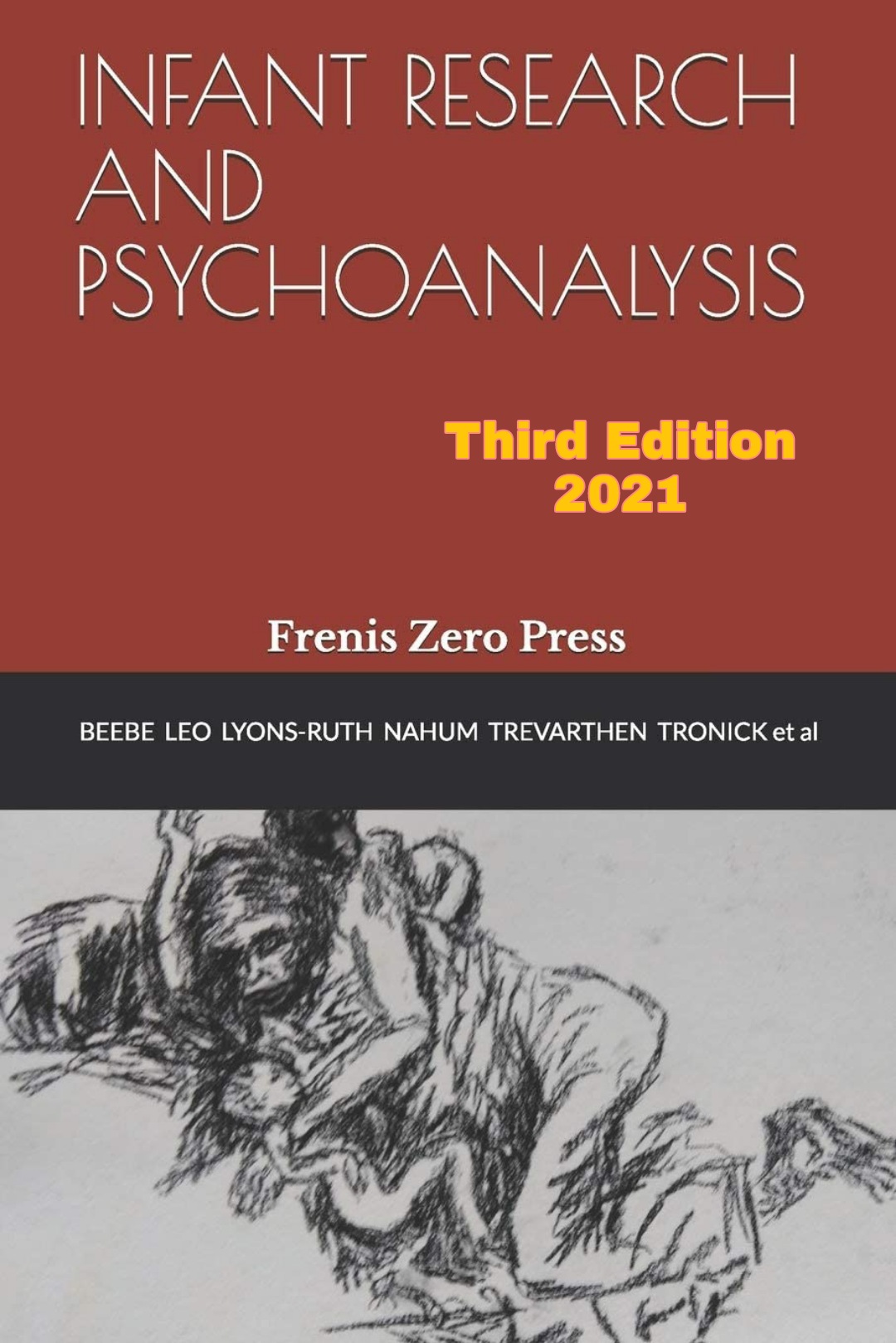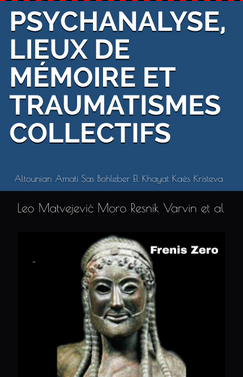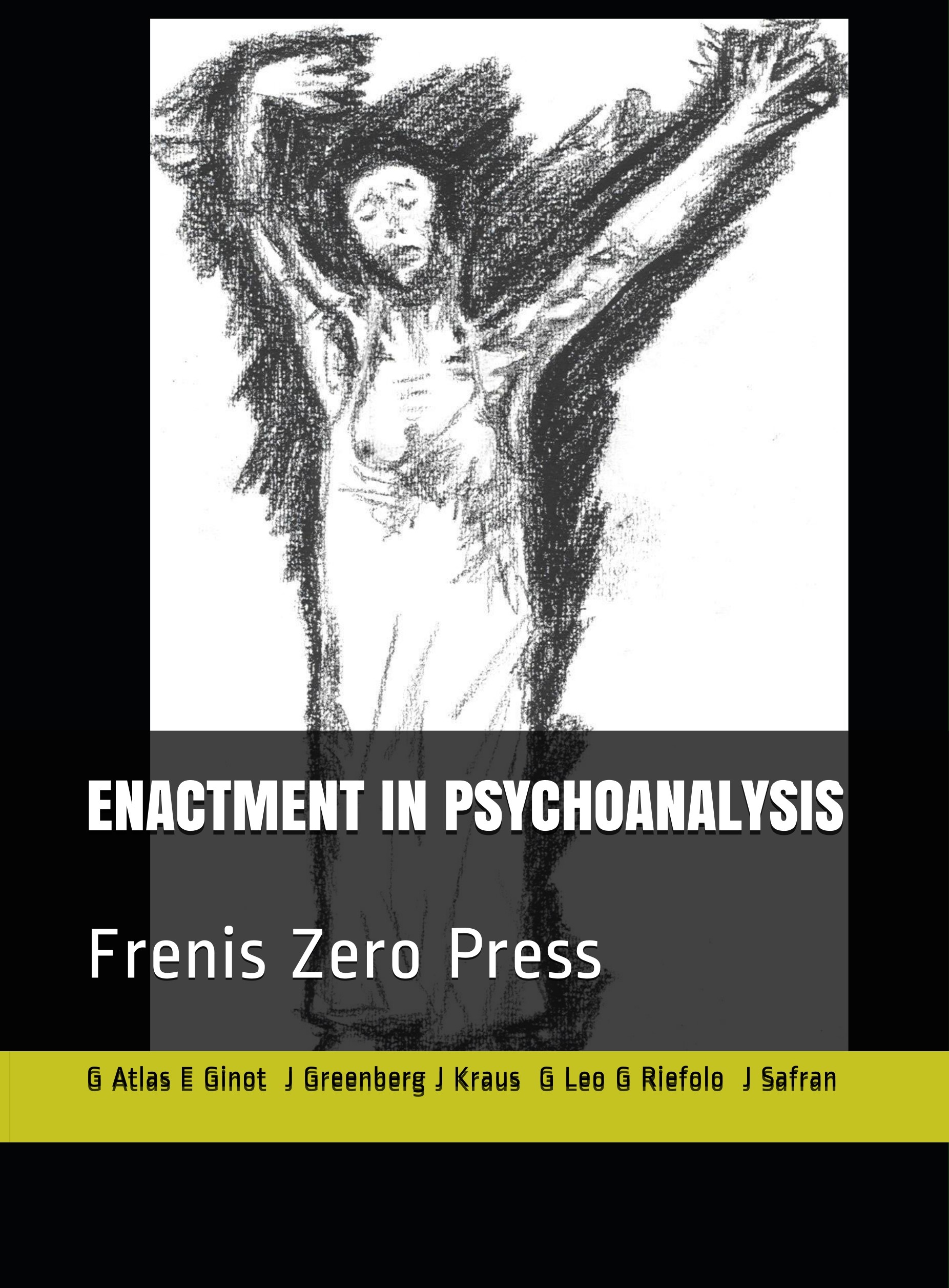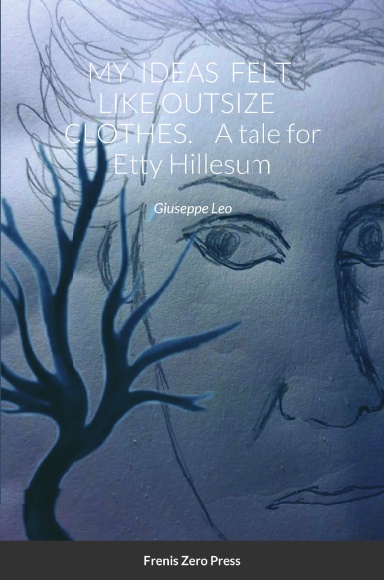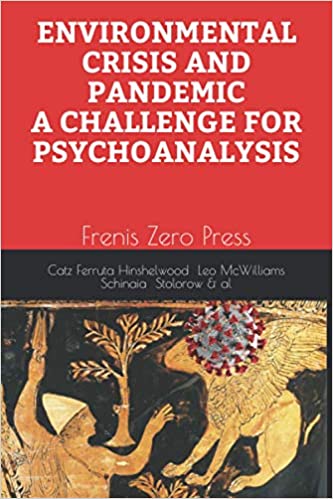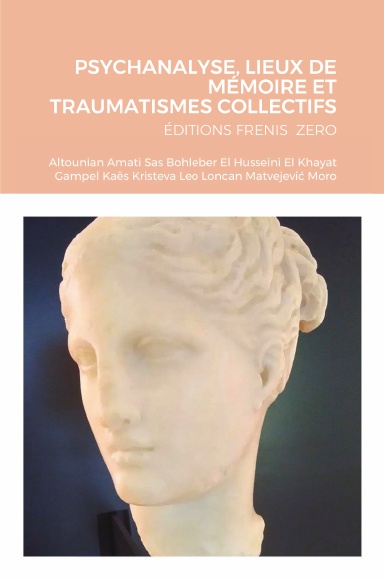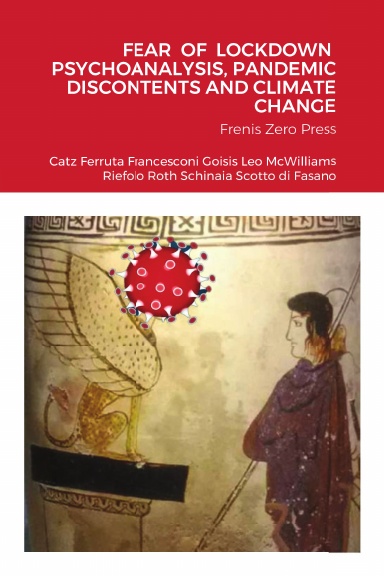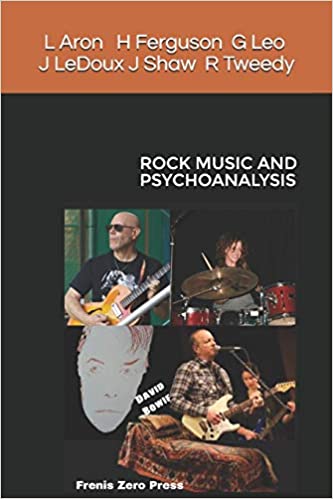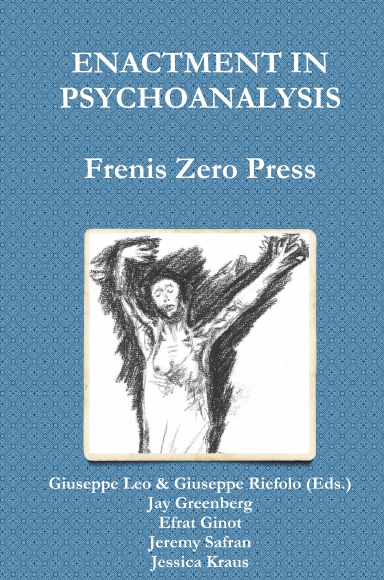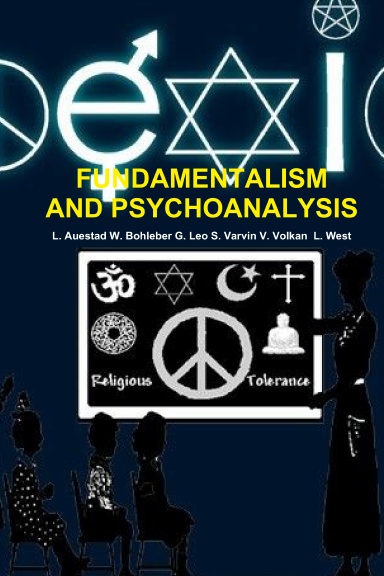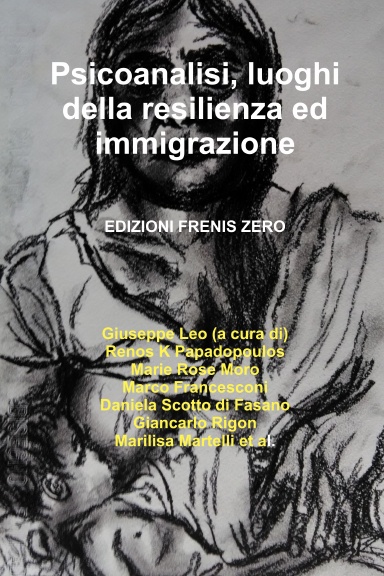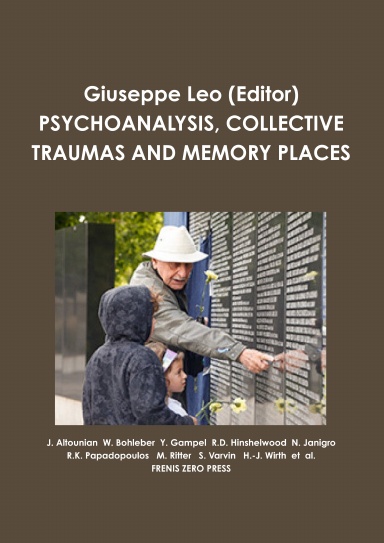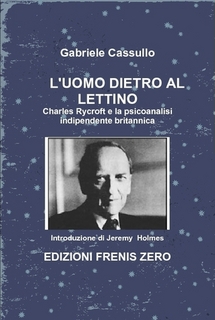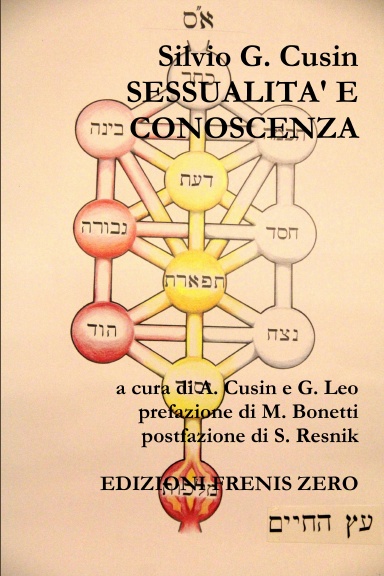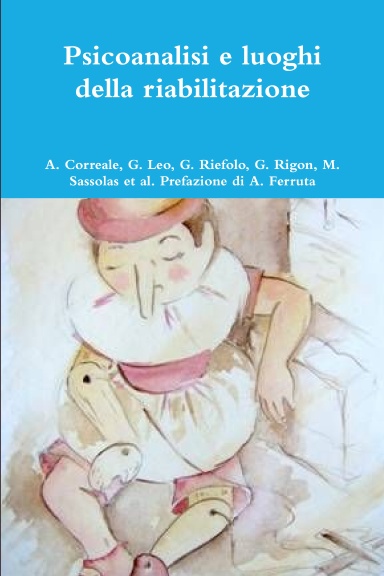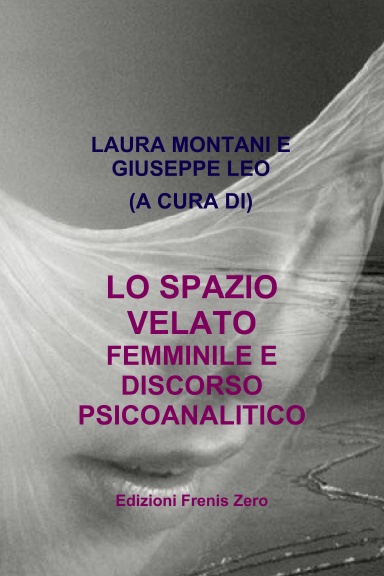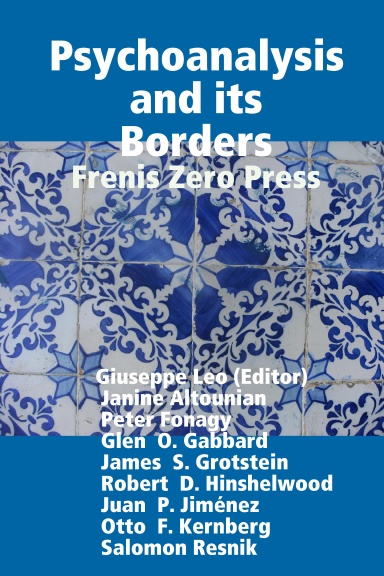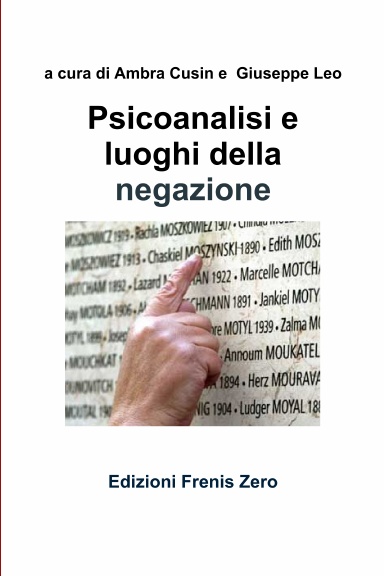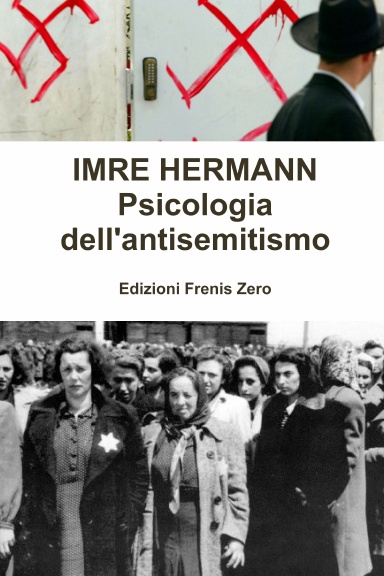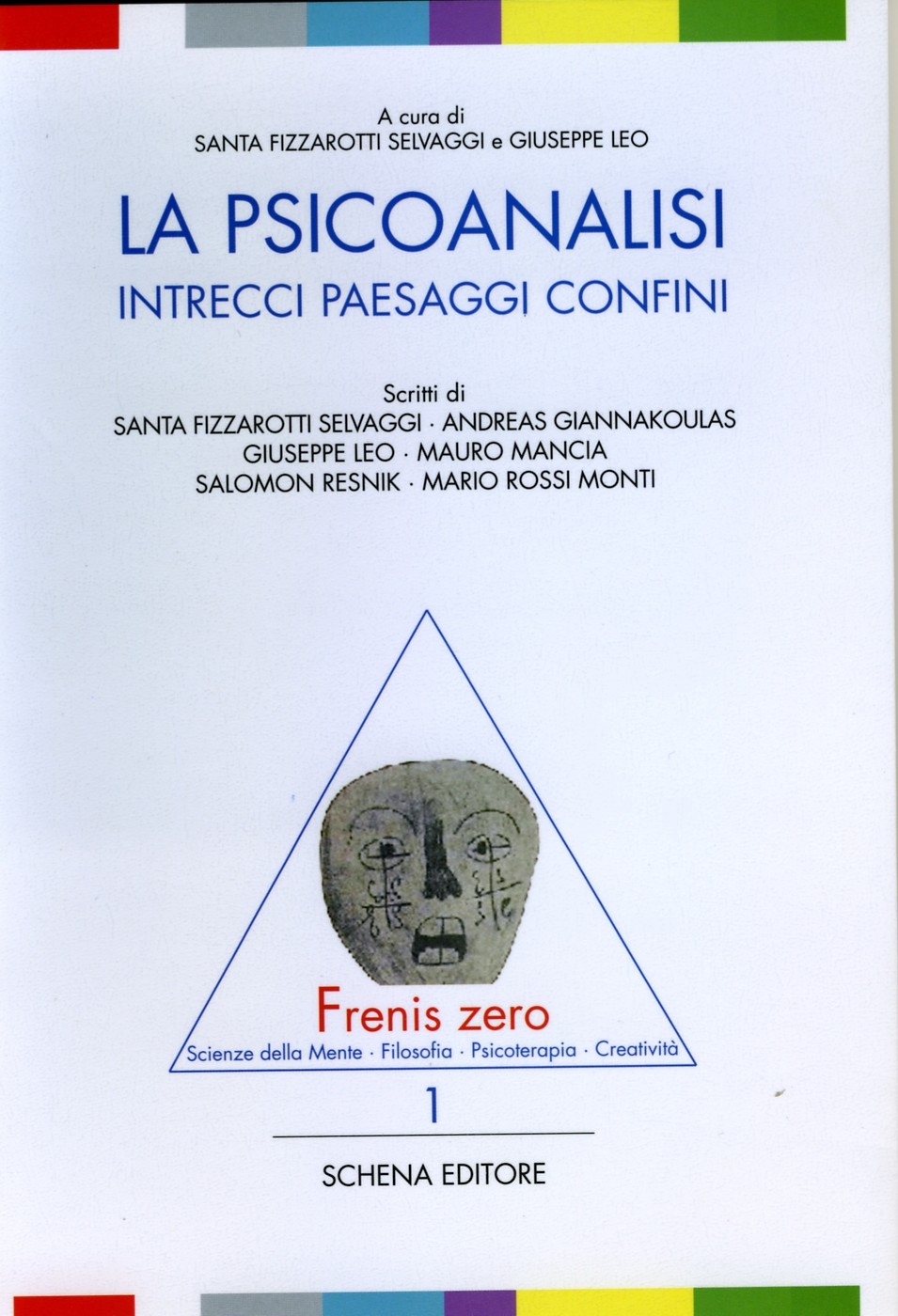|
Today’s
psychiatrists are pragmatists, on the look-out for what
‘works’ and sceptical about the grand theories that held
sway in the previous century. But ideology cannot be wholly
avoided, nor theoretical controversy evaded. Current psychiatry’s
pantheon incudes evidence-based practice, DSM
diagnosis and neuroscience. The search for evidence is
theory driven. Diagnostic profusion raises questions about
the medicalisation of human suffering. Despite extraordinary recent
advances in neuroscience, their impact on everyday
psychiatric practice has been modest.
The
purpose of this article is twofold: first, to introduce readers
to an overarching model of brain function associated with
the mathematical psychiatrist Karl Friston, the free energy
principle (FEP), which has been influential in neuroscience
generally,
but thus far has caused relatively little stir within
psychiatry or clinical psychology. My hope is to redress
that. Second, I make the case that FEP can revitalise the
psychoanalytic psychotherapies, marginalised by the inexorable
rise of cognitive–behavioural therapy (CBT) as the
dominant psychological therapy paradigm.
It
should be noted that FEP is deliberately described by Friston
as a ‘principle’, akin to the principles of natural selection or
gravity. The evidence for its validity is circumstantial rather
than direct, and its detailed neuronal mechanisms and clinical
implications remain to be fully explored.
Friston’s
forebears
Friston’s
project builds on the work of a number of pioneering predecessors
and their concepts. These include Erwin Schrödinger,
Heinrich Helmholtz, the Claudes – Claude Bernard
and Claude Shannon – and Thomas Bayes. We live
in an entropic universe. Broken cups don’t spontaneously reassemble.
Coffee cools once poured. Stars burn out.
The exception is life itself. Quantum physicist Schrödinger1
coined the term ‘negentropy’ to describe how living
matter, Canute-like for its lifetime, reverses this cosmic tide
towards disorder and homogeneity.
The
key to negentropy is homeostasis. As Bernard famously put
it, the condition of a free life is the stability of the interior
milieu – whether one is a unicellular amoeba or, like Schrödinger,
a Nobel-prize winning primate. Homeostasis, and
the more general processes of allostasis2, resist the forces
of entropy, physiologically and behaviourally.
Inherent
in homeostasis are boundaries: cell membranes,
the
skin, the brain within its skull. Janus-like, homeostasis
faces
outwards towards the environment and inwards
towards
the milieu interieur. Temperature sensors in the
skin
tell us it’s a hot day; the sympathetic nervous system
activates
sweat glands, the brain tells us to fling off jumpers,
move
into the shade, etc., all in the service of resisting being
entropically
fried. Note that homeostats vary in ‘precision’ –
some
are highly sensitive, whereas others tolerate a great
range
of variation.
Friston
had the insight and mathematical sophistication
to
see that the negentropic homeostatic principle applies not
just
to the organism as a whole but to the brain itself3,4. The
brain’s
job is to counteract entropy and to maintain internal
stability
on behalf of the organism whose processes and
behaviour
it controls and directs; this applies, reflexively,
to
itself.
The
FEP goes back to the ideas of 19th-century polymath
Hermann
von Helmholtz, updated by artificial
intelligence
(AI) neuroscientists Geoffrey Hinton and Peter
Dayan5.
Naively, we tend to think of vision as a camera-like
image
passively projected onto the visual cortex, or the auditory
system
as microphone-like, responding indiscriminatingly
to
the prevailing phonic universe. In the Helmholtz
model
the brain makes its own world. Our sense organs, external
and
internal, are constantly bombarded by a vast range of
stimuli
from an ever-changing environment. To operate with
maximum
efficiency, the brain selects out the ‘meaning’ of its
sensations,
attending only to those that are relevant to its
‘affordances’6
– its specific ecological niche – and especially
to
input that is anomalous or novel.
Working
in the 1950s at the Bell telephone company
laboratory,
Claude Shannon saw that this ‘meaning’ could
be
quantified – as ‘bits’ of information. Gregory Bateson,
anthropologist
and family therapy guru, called these ‘differences
that
make a difference’. White noise is chaotic, entropic
and
devoid of information. Language, whether spoken, sung
or
gestured, is structured, ordered, negentropic. The measure
of
informational energy is ‘surprise’, i.e. how unexpected a
signal
is. In the board game Scrabble, the letter ‘x’ conveys
more
information than ‘e’ because it is relatively unusual,
applying
to a smaller range of words, and so in calculating
the
score, is ‘worth’ more. The brain’s aim is constantly to
reduce
informational entropy and maximise meaning.
A
crucial building block for the FEP is the concept of the
Bayesian
brain. The Reverend Thomas Bayes, a late
18th-century
clergyman and founder of probability theory,
grasped,
Doris Day-like, that the future’s not ours to see.
Yet,
to survive and adapt we need to know, moment to
moment,
‘what is going on’ – in ourselves, in the interpersonal
world
and in the physical world. On the basis of
prior
experience, the Bayesian brain7 continuously estimates
the
likelihood of future events. Probabilities are computed
by
comparing current states of affairs with past occurrences,
estimating
the extent of correspondence between them,
factoring
in the likelihood of errors in both memory and
perception,
and ending with a portion that represents that
which
cannot be predicted. This is ‘prediction error’, which
must,
in the service of negentropy, be minimised as far as
is
possible – prediction error minimisation or PEM.
The
brain, ‘top-down’, uses Bayesian probabilities to clarify
‘bottom-up’
input, extero- and interocaptive8: ‘My stomach
is
complaining, but it’s not surprising – I overdid it on the
pudding,
so it’s probably not cancer’; ‘I know that tune, I’ve
heard
it so many times – yes of course, it’s the Beatles’
Yellow
Submarine’; ‘Is that a stick or a snake? Come on, no
adders
in city centres, probably safe to pick it up’.
Free
energy
Nowto
the free energy principle itself. ‘Energy’ equates to information,
albeit physically
embodied in patterns of neuronal
impulses,
synaptic transmission (‘fire together, wire together’9)
and
the neurohormonal environment. Prior models of the
world,
top-down, ‘bind’ incoming bottom-up information.
Energy
unbound, or prediction error, reflects novelty in need
of
binding – and so forestall the dangers of entropic chaos.
Circumstantial
evidence for the FEP is the fact that
more
neuronal fibres reach the eye downwards from the
brain
than travel upward towards the visual cortex.
Whenever
possible, the brain ‘tells’ the eye what it is likely
to
be seeing. The FEP postulates a hierarchical series of
neuronal
interactions, starting from the least to the most
complex,
from the periphery to the central nervous system,
from
specificity to abstraction, most of which operate
below
conscious awareness. At the level of the eye itself
the
retinal receptors are activated: ‘round, two dots and a
straight
line between’. Top-down, even in a 1-month baby,
this
will elicit an answering smile (‘face equals security’).
Once
language arrives, verbal concepts shape perceptions:
‘Oh
of course, that’s a face’. At the highest level is mentalising
–
thinking about thinking: ‘I wonder why bearded faces
always
make me feel slightly unsettled? Perhaps it’s reminiscent
of
my scary grandfather’.
The
FEP visualises a series of ‘conversations’ in which
top-down
‘priors’ ‘bind’ bottom-up input into probabilistically
recognisable
meanings. Each level can be thought of as
a
meaning–action boundary. Ascending the hierarchy, the
Bayesian
process ensures that the most mathematically
probable
pattern prevails across these statistical boundaries
or
‘Markov blankets’10. Prediction error is minimised by
‘binding’
bottom-up energy (informational as well as physiological) by
top-down generative models based on preexisting patterns
and concepts. Thus is order preserved,
entropy
eschewed. We know what we like and, mostly, see
what
we want and expect to see.
But
there will always be a discrepancy between our preexisting
models
of the world and incoming sensations, an
excess
of energy that cannot be bound and will have to be
passed
onto the next level up of the hierarchy. Lockdown
excepted,
we don’t live huddled in ‘dark rooms’11.
The
environment is constantly
in flux; we need to explore as much as conserve
– to find new sources of food, suitable mates, interest and
excitement. Surprise, calibrated by the brain as the
discrepancy
between expectation and incoming sensation,
is
a proxy for free energy – and hence entropy. Surprise is
both
vital to survival but also potentially entropic, disruptive
or
even life-threatening. This represents the prediction error
aforementioned.
The brain minimises such surprise/error by
whatever
means possible.
At
this point the role of affect becomes important. Free
energy
is aversive and can be thought of as representing
mental
pain. Conversely, ‘binding’ free energy is rewarding
and
therefore motivating. The role of affect, positive and
negative,
is to drive the free energy minimising processes.
This
is another ‘AI’ – active inference.
The
idea of active inference captures a number of psychological
processes
central to psychological health. First,
action
or agency. Given that incoming stimuli are inherently
subject
to error and imprecision, the brain increases precision
by
movement – approaching an ambiguous stimulus
source,
turning the head to use foveal rather than peripheral
vision,
switching lights on in order to see better, etc. Second,
top-down
model revision. Now we know what that vague
shape
really ‘is’ – a cat, clothes strewn on the floor, etc.:
‘Let’s
listen more carefully. Oh, that’s not the Beatles at
all,
it’s the Beach Boys’. Third, and vitally in the case of
social
species such as our own, active inference is enhanced
by
recruiting help or ‘twogetherness’: ‘Did you hear something,
or
was I just imagining it?’; ‘You know about ’70s
music
– what was that group’s name?’. Friston & Frith call
this
‘duets for one’ and have worked out the mathematics
of
such collaborative Markov blankets12. Fourth, if all else
fails,
by choosing or fashioning environments that conform
to
the brain’s pre-existing models of the word: ‘I can’t
stand
modern music. Let’s go over to Classic FM’. This
last
aspect is captured by the psychoanalytic concept of ‘projective identification’,
in which we shape our interpersonal
world,
often deleteriously, to conform with expectations:
‘You
psychiatrists are all the same – never there when
I
need you’.
Free
energy and psychopathology
The
FEP has clear implications for those who work in
mental
ill health, and especially who favour psychological
methods
of treatment. Consider depression, typically triggered
by
loss, trauma or multiple setbacks. Adversity is
widespread
– poverty, inequality, racism – but not all succumb.
To
understand resilience, we need an illness model
that
encompasses not just events, but individuals’ responses
to
them. Attachment research shows that those who are
securely
attached are able to repair the inevitable ruptures
to
which all are prone, often through the typical sequence
of
protest, rage, grief and mourning13. As children, securely
attached
people have had caregivers they could depend on
to
acknowledge their pain, tolerate protest and help them
to
move on. Repeated episodes of everyday rupture–repair
cycles
help build this resilience.
The
free energy released by the rupture is bound by the
child’s
knowledge that help is at hand and that their epistemically trusted
caregiver will provide a generative model to counteract
the free energy associated with ruptures: ‘Don’t
worry
love, I’m just going to the loo, I’ll be back in a minute’.
In
the ‘still face’ paradigm, parents are asked to freeze their
facial
expression for 1 minute while talking or playing with
their
child14 . Securely attached children continue actively to
try
to re-engage with their caregivers in the confident expectation that
they will be ‘back soon’. For insecurely attached children,
by contrast, rather than rupture–repair, cycles of rupture–despair
or rupture–disappear are the norm. Their caregivers
have either themselves been overwhelmed by
their
child’s unhappiness and so despairingly abandon
attempts
to alleviate it; or repress the impact of the child’s
mental
pain and so ‘disappear’ emotionally. Both leave the
child
alone to find ways to bind the free energy the rupture
evokes.
When their caregiver’s face freezes they look away,
become
miserable and regressed, and often resort to selfsoothing
rituals
such as rocking or emotional dissociation.
Such
insecurely attached children are primed in later
life
for depression in response to loss or trauma or, in
extreme
cases, to developing post-traumatic stress disorder.
The
ingredients of free energy minimisation needed to
maintain
psychological equilibrium are for them problematic.
Active
inference is compromised. They tend to be passive
rather
than active. They stick with limited and simplistic
and
inflexible ‘top-down’ models such as ‘It’s no use trying to
make
things better, it never works’ or ‘Feelings are dangerous,
best
to keep them buried’. They find it hard to trust
people
and so can’t ‘borrow’ an intimate other’s brain with
which
to process feelings and build up alternative ways of
viewing
the world.
Psychotherapeutic
implications
The
most commonly used therapy for depression, CBT,
attempts
to address these deficiencies. Therapists encourage
patients
actively to test their negative ‘hypotheses’ by looking
more
closely at their experiences and by exploring alternative
top-down
models to account for them (‘Maybe my
boyfriend
didn’t answer his phone because he’d run out of
battery,
not because he doesn’t love me’). But CBT has its
limitations.
‘Treatment-resistant depression’ is common15.
People
with personality disorders do badly with standard
CBT,
often refusing to engage or dropping out16. The FEP
provides
explanations for this. From an FEP perspective,
one
way to minimise free energy is to gravitate towards or
engender
environments that confirm one’s view of the
world,
however negative. Depression relegates sufferers to
emotionally
impoverished relationships, stereotyped and
simplistic
top-down models, and thus becomes a selffulfilling
hypothesis,
resistant to psychotherapeutic interventions.
In
addition, these negative top-down priors are
‘inferentially
inert’, i.e. inaccessible for modification.
A
degree of chaos/uncertainty/free energy needs to be
tolerated
before new generative models can evolve.
Homeostatic
imprecision needs to be tolerated for a while.
The
holding and ‘negative capability’ of the therapist’s ‘borrowed
brain’ paves the way
for a more complex, nuanced
top-down
reset. Given that people with personality disorders
notoriously
find it difficult to trust others, the brevity and
defocus
on the therapeutic relationship in standard CBT
limits
the scope for such fundamental change.
Moving
from depression to an FEP perspective on
trauma,
the latter creates an overwhelming influx of free
energy
for which there are no available top-down models
with
which to bind it. Thoughts of cruelty, neglect and
abuse
remain in the realm of the unthinkable and are therefore
‘defended
against’ by repression or dissociation17.
However,
when jointly considered – under a shared
Markov
blanket – these bottom-up unprocessed experiences
can
be bound with the therapist’s encouragement and
expertise
into manageable narratives. However painful,
they
become less overwhelming, a source of new ways of
thinking
and psychic reorganisation. As the patient begins
to
feel that the therapist is safe, reliable, compassionate
and
empathic, so everyday ruptures – session-endings, holiday
breaks
and misunderstandings – are repeatedly repaired
via
model revision (‘Maybe the weekend break does not inevitably mean
I’m forgotten’), and the trust this engenders can
be
generalised into the patient’s everyday life.
We
can see here how contemporary psychoanalytic psychotherapy and
revitalised Freudian ideas resonate with the
FEP.
Freud started off his working life as a neurologist. Like
Friston,
he conceptualised the brain’s aim as reducing
psychic
energy, typically through action and ‘word representations’ –
i.e. transmuting free energy into thinkable
thoughts.
He saw unbound energy (which he later transmuted
into
‘libido’) as potentially disruptive and responsible
for
the symptoms of psychological illness. Psychoanalysis
was
designed first
to evoke and then to quieten this
trauma-related
unbound energy. To achieve this, three key
psychoanalytic
procedures are free association, dream analysis
and
analysis of transference.
The
‘virtual’
nature of the psychoanalytic
relationship
brings
both top-down and bottom-up components of the
FEP
process into focus, enabling them to be mentalised rather
than
enacted. Free association taps into the mind’s
normally
unvoiced
upward-welling stream of consciousness, counteracting
the
elusiveness of affect
seen in the rupture–despair/
disappear
attachment pattern. This enables the range of
top-down
responses to be enhanced and aversive free energy
minimised.
At the top-down level, in a process comparable
to
the immune system’s
lexicon of antigen-activated antibodies,
dreaming
is the means by which the mind generates
a
repertoire of narratives with which to bind the free energy
which
life’s
vicissitudes engender. Transference analysis
turns
the spotlight on the limited varieties of top-down narratives
that
sufferers
use in their dealings with intimate others
to
minimise free energy. The enigmatic ambiguity of therapists’
persona
enables patients to experience, reconsider and
extend
the top-down assumptions with which they approach
the
world of intimate others.
Psychoanalysis
has tended to self-isolation, sequestrated
from
cross-fertilisation by other disciplines. The Friston–
Freud
consilience opens up new possibilities. Psychoanalytic
and
attachment-derived mentalisation-based therapy (MBT)
is
now established as a highly effective
therapy for borderline
personality
disorder, previously considered untreatable18.
MBT
leads to big reductions in medication use, suicide
attempts,
hospital admission and unemployment among people
with
borderline personality disorder, as compared with
treatment
as usual.
MBT
is both practically and conceptually consistent
with
the FEM. It encourages patients (a) to identify the
bottom-up
feelings that fuel their self-injurious actions, (b)
to
pause and think of different
ways of handling these, i.e.
to
tolerate a quantum of free energy with the help of the
therapists’
‘borrowed brain’
and (c) through mutual mentalising
(therapist
and patient together forming a neurobiological
‘bubble’)
to generate more complex and adaptive
models
of the self and significant
others. The result is manageable surprise:
confounding sufferers’
negative assumptions about
the world, becoming less overwhelmed by
unbound
affect
(fewer ‘melt-downs’)
and facilitating greater
resilience.
Conclusions
If
rehabilitation of the psychoanalytic method in the light of
the
FEP comes as a pleasant surprise, this is consistent with
its
principles. As in Mark Twain’s
trope, rumours of psychoanalysis’s
death
have been greatly exaggerated. In place of despair
or disappearance, the FEP suggests that repair is
possible.
FEP-grounded psychoanalytic approaches such as
MBT
are now known to help those with profound mental
distress.
They also suggest a scientifically
sound account of
the
interpersonal and neuronal mechanisms by which psychological change
comes about.
|
References
1 Schrödinger
E. What is Life? The
Physical Aspect of the Living Cell.
Cambridge
University Press, 1944.
2 Sterling
P. Principles of allostasis. In Allostasis,
Homeostasis, and the
Costs
of Physiological Adaptation (ed
J Schulkin). Cambridge University
Press, 2004.
3 Friston
KJ. The free energy principle: a unified
brain theory? Nat Rev
Neurosci
2010; 11:
127–38.
4 Friston
KJ, Fortier M, Friedman DA. Of woodlice and men: a Bayesian
account of
cognition, life and consciousness. An interview with Karl
Friston.
ALIUS Bull 2018;
2:
17–43.
5 Dayan
P, Hinton G, Nesl R, Zemel R. The Helmholtz machine. Neural
Comput
1995; 7:
889–904.
6 Gibson
J. The Ecological Approach
to Visual Perception. Laurence
Erlbaum,
1986.
7 Holmes
J, Nolte T. “Surprise”
and the Bayesian brain:
implications for
psychotherapy
theory and practice. Front
Psychol 2019; 10:
592.
8 Holmes
J. The Brain Has a Mind of
Its Own: Attachment, Neurobiology and
the
New Science of Psychotherapy.
Confer Books, 2020.
9 Hebb
D. The Organisation of
Behaviour. John Wiley &
Sons, 1949.
10 Kirchhoff
M, Parr T, Palacios E, Friston
K, Kiverstein J. The Markov blankets
of
life: autonomy, active inference and the free energy principle. J
R
Soc
Interface 2018; 15(138):
20170792.
11 Friston
KJ, Thornton C, Clark A. Free energy minimisation and the
darkroom
problem.
Front Psychol 2012;
3:
130.
12 Friston
K, Frith C. A duet for one. Conscious
Cogn 2015; 36:
390–405.
13 Holmes
J, Slade A. Attachment in
Therapeutic Practice.
Routledge, 2017.
14 Tronick
E. The Neurobehavioural and
Socio-Emotional Development of
Infants
and Children. Norton, 2007.
15 National
Institute for Health and Care Excellence. Depression
in Adults:
Recognition
and Management (Clinical Guideline CG90).
NICE, 2009.
16 Davidson
KM. Cognitive Therapy for
Personality Disorders: A Guide for
Clinicians
(2nd edn). Routledge, 2008.
17 Connolly
P. Expected free energy formalizes conflict
underlying defense
in
Freudian psychoanalysis. Front
Psychol 2018; 9:
1264.
18 Bateman
A, Fonagy P. A randomized controlled trial of a
mentalizationbased
intervention
(MBT FACTS) for families of people with borderline
personality
disorder. Person Disord:
Theory Res Treat 2019; 10:
70–9.
|
XXXXXXXXXXXXXXXXXXX XXXXXXXXXXXXXXXXXXX XXXXXXXXXXXXXXXXXXX XXXXXXXXXXXXXXXXXXX XXXXXXXXXXXXXXXXXXX XXXXXXXXXXXXXXXXXXX XXXXXXXXXXXXXXXXXXX XXXXXXXXXXXXXXXXXXX XXXXXXXXXXXXXXXXXXX XXXXXXXXXXXXXXXXXXX XXXXXXXXXXXXXXXXXXX XXXXXXXXXXXXXXXXXXX XXXXXXXXXXXXXXXXXXX XXXXXXXXXXXXXXXXXXX XXXXXXXXXXXXXXXXXXX XXXXXXXXXXXXXXXXXXX XXXXXXXXXXXXXXXXXXX XXXXXXXXXXXXXXXXXXX XXXXXXXXXXXXXXXXXXX XXXXXXXXXXXXXXXXXXX XXXXXXXXXXXXXXXXXXX XXXXXXXXXXXXXXXXXXX XXXXXXXXXXXXXXXXXXX XXXXXXXXXXXXXXXXXXX XXXXXXXXXXXXXXXXXXX XXXXXXXXXXXXXXXXXXX XXXXXXXXXXXXXXXXXXX XXXXXXXXXXXXXXXXXXX XXXXXXXXXXXXXXXXXXX XXXXXXXXXXXXXXXXXXX XXXXXXXXXXXXXXXXXXX XXXXXXXXXXXXXXXXXXX XXXXXXXXXXXXXXXXXXX XXXXXXXXXXXXXXXXXXX XXXXXXXXXXXXXXXXXXX XXXXXXXXXXXXXXXXXXX XXXXXXXXXXXXXXXXXXX XXXXXXXXXXXXXXXXXXX XXXXXXXXXXXXXXXXXXX XXXXXXXXXXXXXXXXXXX XXXXXXXXXXXXXXXXXXX XXXXXXXXXXXXXXXXXXX XXXXXXXXXXXXXXXXXXX XXXXXXXXXXXXXXXXXXX XXXXXXXXXXXXXXXXXXX XXXXXXXXXXXXXXXXXXX XXXXXXXXXXXXXXXXXXX XXXXXXXXXXXXXXXXXXX XXXXXXXXXXXXXXXXXXX XXXXXXXXXXXXXXXXXXX XXXXXXXXXXXXXXXXXXX XXXXXXXXXXXXXXXXXXX XXXXXXXXXXXXXXXXXXX XXXXXXXXXXXXXXXXXXX XXXXXXXXXXXXXXXXXXX XXXXXXXXXXXXXXXXXXX XXXXXXXXXXXXXXXXXXX XXXXXXXXXXXXXXXXXXX XXXXXXXXXXXXXXXXXXX XXXXXXXXXXXXXXXXXXX XXXXXXXXXXXXXXXXXXX XXXXXXXXXXXXXXXXXXX XXXXXXXXXXXXXXXXXXX XXXXXXXXXXXXXXXXXXX XXXXXXXXXXXXXXXXXXX XXXXXXXXXXXXXXXXXXX XXXXXXXXXXXXXXXXXXX XXXXXXXXXXXXXXXXXXX XXXXXXXXXXXXXXXXXXX XXXXXXXXXXXXXXXXXXX XXXXXXXXXXXXXXXXXXX XXXXXXXXXXXXXXXXXXX XXXXXXXXXXXXXXXXXXX XXXXXXXXXXXXXXXXXXX XXXXXXXXXXXXXXXXXXX XXXXXXXXXXXXXXXXXXX XXXXXXXXXXXXXXXXXXX XXXXXXXXXXXXXXXXXXX XXXXXXXXXXXXXXXXXXX XXXXXXXXXXXXXXXXXXX XXXXXXXXXXXXXXXXXXX XXXXXXXXXXXXXXXXXXX XXXXXXXXXXXXXXXXXXX XXXXXXXXXXXXXXXXXXX XXXXXXXXXXXXXXXXXXX XXXXXXXXXXXXXXXXXXX XXXXXXXXXXXXXXXXXXX XXXXXXXXXXXXXXXXXXX XXXXXXXXXXXXXXXXXXX XXXXXXXXXXXXXXXXXXX XXXXXXXXXXXXXXXXXXX XXXXXXXXXXXXXXXXXXX XXXXXXXXXXXXXXXXXXX XXXXXXXXXXXXXXXXXXX XXXXXXXXXXXXXXXXXXX XXXXXXXXXXXXXXXXXXX XXXXXXXXXXXXXXXXXXX |








